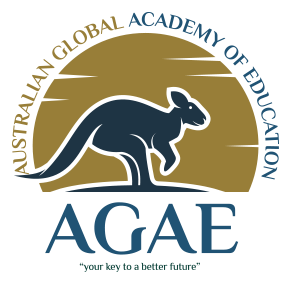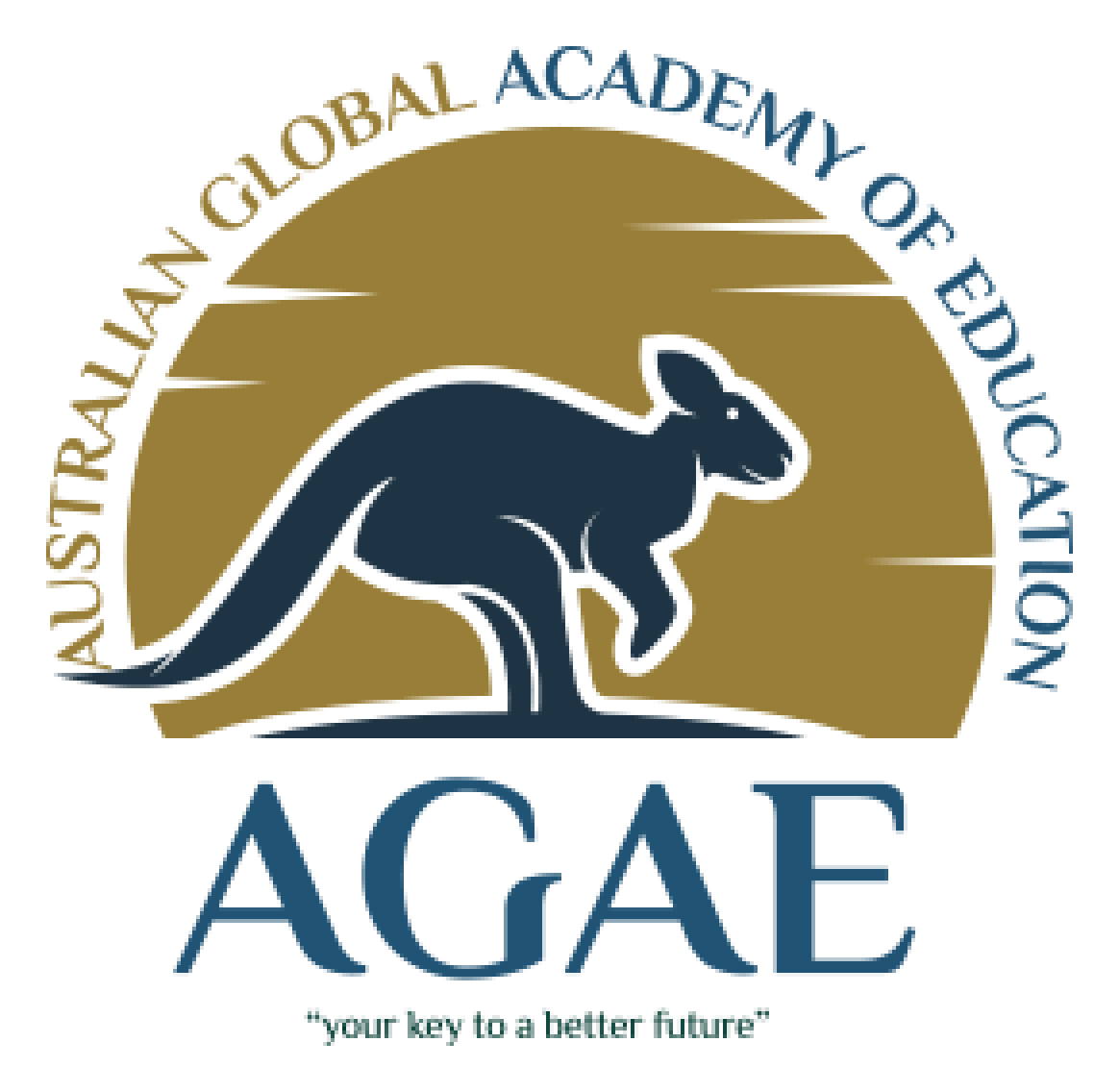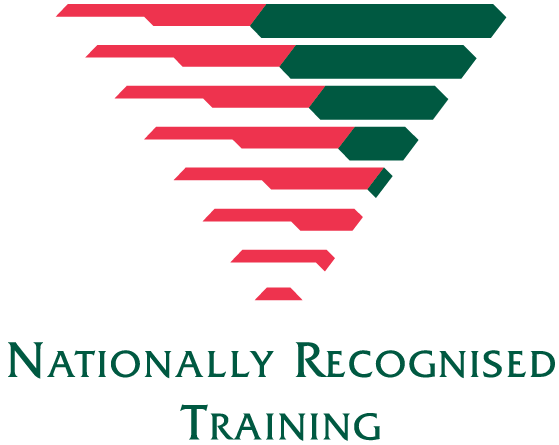Qualification Description
This qualification reflects the role of educators in early childhood education and care who work in regulated children’s education and care services in Australia. Educators at this level are responsible for designing and implementing curriculum that meets the requirements of an approved learning framework and for maintaining compliance in other areas of service operations. They use specialised knowledge and analyse and apply theoretical concepts to diverse work situations. They may have responsibility for supervision of volunteers or other educators.
Early childhood educators work in long day care centres, family day care, pre-schools or kindergartens.
To achieve this qualification, the individual must have completed a total of least 280 hours of work in a regulated children’s education and care service in Australia as detailed in the Assessment Requirements of units of competency. The total number of hours may be applied collectively across all units of competency that include the requirement for workplace hours.
No occupational licensing, certification or specific legislative requirements apply to this qualification at the time of publication.
Who is the course suitable for ?
The CHC50121 Diploma of Early Childhood Education and Care is ideal for individuals who are interested in providing high-quality care and education to young children. This qualification is designed for those who wish to pursue a rewarding career in the early childhood education and care sector, working with children from birth to 12 years old.
It is perfect for individuals who are passionate about:
- Supporting the development and learning of young children by creating safe, engaging, and enriching environments.
- Planning and implementing educational programs that foster children’s social, emotional, cognitive, and physical development.
- Managing and leading teams in early childhood settings, such as childcare centers, kindergartens, and preschool programs.
- Promoting positive relationships with children, families, and colleagues to ensure a holistic approach to childcare and development.
- Adhering to legal and ethical standards in the early childhood sector, including ensuring the safety and well-being of children in care.
- Providing inclusive practices that cater to the diverse needs of children, including those with additional needs or from various cultural backgrounds.
Course Duration
- 12 – 18 Months
All students are to engage in at least 15 hours of supported self-paced learning each week during the course. Supported self-paced learning is to be undertaken by the students outside of the scheduled hours according to the student’s individual learning needs. However, to support the students, AGAE will provide a self-study guide that links self-paced learning activities to these scheduled timetables.
Mode of delivery
- Face to Face and/or Live Zoom Sessions
Training Locations
- Victoria: GO2/1510 Pascoe Vale Road, Coolaroo Vic 3048
- SA: 255 South Road Mile Ends, SA 5031
- WA: Live-zoom sessions
Course Structure
To be awarded the nationally accredited certificate the CHC50121 Diploma of Early Childhood Education and Care, a student must successfully complete a total of 15 units comprising of 12 core units and 3 elective units.
| Unit Code | Unit Name | Core / Elective |
|---|---|---|
| BSBTWK502 | Manage team effectiveness | Core |
| CHCECE041 | Maintain a safe and healthy environment for children | Core |
| CHCECE042 | Foster holistic early childhood learning, development and wellbeing | Core |
| CHCECE043 | Nurture creativity in children | Core |
| CHCECE044 | Facilitate compliance in a children’s education and care service | Core |
| CHCECE045 | Foster positive and respectful interactions and behaviour in children | Core |
| CHCECE046 | Implement strategies for the inclusion of all children | Core |
| CHCECE047 | Analyse information to inform children’s learning | Core |
| CHCECE048 | Plan and implement children’s education and care curriculum | Core |
| CHCECE049 | Embed environmental responsibility in service operations | Core |
| CHCECE050 | Work in partnership with children’s families | Core |
| CHCPRP003 | Reflect on and improve own professional practice | Core |
| CHCECE052 | Plan service and supports for children and families | Elective |
| CHCPOL002 | Develop and implement policy | Elective |
| CHCECE053 | Respond to grievances and complaints about the service | Elective |
What resources are used to deliver the training ?
Student Handbook
A comprehensive Student Handbook will be provided to each student. This document outlines the course structure, objectives, key concepts, and guidelines, serving as a reference throughout the program. It also includes essential information on safety protocols and best practices. The handbook contains:
- Key learning points and summaries for each unit
- Theoretical readings and additional resources to deepen understanding
This resource ensures students are well-equipped to navigate the course and apply their knowledge effectively.
Textbook
The Textbook for students studying the Diploma of Early Childhood Education and Care provides essential information to help them navigate through the course content, practical tasks, and assessments. It serves as a comprehensive resource that supports students’ learning and ensures they understand the key concepts, skills, and requirements they need to succeed in furthering the skills they have already developed in the field of childhood education and care.
Students are required to purchase their own textbooks at their own expense. For detailed information on the required textbooks, purchasing process, and related details, please inquire during th enrolment process.
By following the guide, students can ensure that they meet all course requirements and are fully prepared to enter the workforce as qualified teaching assistants, classroom aides, or education support workers.
Presentation Slides
Presentation slides are used by the trainer during the course delivery to visually support key concepts and discussions. These slides summarize the main points from the Textbook, helping students follow along and engage with the material. They may include:
- Diagrams and charts
- Example scenarios and case studies for group discussion
Practical Equipment & Tools
During practical sessions, students will typically use a variety of practical equipment and tools to ensure hands-on learning and effective implementation of the skills and knowledge required in the course. These tools help students gain a better understanding of how to provide high-quality care and education to young children. Some of the key equipment and tools for this qualification include:
- Furniture and Layout
- Child-sized Tables and Chairs: To provide students with the experience of setting up an appropriate space for young children.
- Cots and Sleep Mats: For simulating nap time or rest periods for children.
- Storage Units: Shelving and storage bins for organizing toys, educational materials, and personal belongings.
- Activity Stations: Separate areas for different types of activities (e.g., art, reading, block building, sensory play) to mimic a functional early childhood environment.
- Play and Learning Resources
- Educational Toys: A range of toys that support different developmental stages (e.g., stacking blocks, puzzles, dolls, pretend play kits).
- Art and Craft Supplies: Paper, crayons, scissors, paint, glue, clay, and other supplies for creative activities that promote fine motor skills and artistic expression.
- Books: A collection of children’s books (picture books, storybooks, board books) that can be used for reading and storytelling sessions.
- Sensory Play Materials: Items such as rice, sand, water tables, textured fabrics, or playdough for sensory exploration.
- Building Blocks and STEM Kits: For promoting problem-solving, hand-eye coordination, and cognitive development.
- Musical Instruments: Simple instruments like tambourines, drums, and maracas to encourage auditory and motor skills through music and movement.
- Health, Safety, and Hygiene Equipment
- First Aid Kit: A fully stocked first aid kit for emergency situations, which is important for practicing safety protocols.
- Hygiene Stations: Soap, hand sanitizers, disposable gloves, and tissues for students to practice proper hygiene protocols.
- Sanitation Equipment: Disinfectant wipes or sprays and cleaning cloths for ensuring cleanliness in the simulated classroom.
- Technology and Digital Resources
- Interactive Whiteboard or Smartboard: For teaching lessons and engaging children in interactive educational activities.
- Behavior Management Tools
- Reward Charts and Stickers: Tools to practice positive reinforcement and behavior management techniques.
- Social Stories Cards: Visual aids to teach children social skills and help with behavior management in various situations.
- Time-out or Calm-down Area: A small area with soft seating or cushions designed to help children regulate emotions and practice self-soothing techniques.
- Curriculum Planning and Documentation Tools
- Planning Templates: Templates for creating lesson plans, daily schedules, and activity outlines.
- Child Development Observation Forms: Blank forms or digital templates for documenting children’s progress, milestones, and behavioral observations.
- Portfolios: Materials for creating children’s portfolios, including templates, folders, and organisational tools to track individual development.
- Parent Communication Tools
- Communication Books: Notebooks or digital platforms to simulate communication with parents about children’s daily activities and progress.
- Diversity and Inclusion Resources
- Multicultural Books and Materials: Books, toys, and visual aids that reflect various cultures, backgrounds, and experiences, promoting inclusivity.
- Sign Language Cards: Resources to help students practice basic sign language for communication with children who may have hearing impairments.
- Adaptive Tools and Resources: Items like sensory toys or communication boards that cater to children with additional needs.
- Role-Play and Dramatic Play Materials
- Pretend Play Kits: Items such as play kitchens, doctor’s kits, dress-up clothes, and cash registers to simulate everyday activities.
- Puppets and Storytelling Tools: Puppets or figurines for role-playing scenarios and engaging children in storytelling.
- Outdoor Play Equipment (if applicable)
- Playground or Outdoor Play Tools: If the simulated classroom includes an outdoor area, it should have equipment like climbing structures, balls, hoops, and balance beams to practice physical activities and gross motor skills.
- Gardening Tools: Small tools for practicing activities like planting or nurturing a garden, which can be used in outdoor learning.
- Assessment and Evaluation Tools
- Developmental Milestone Charts: To track children’s progress across various developmental stages and evaluate their achievements.
- Checklists and Rubrics: For assessing the effectiveness of activities, behavior management techniques, and lesson plans.
- Emergency and Crisis Management Tools
- Emergency Procedure Posters: Visual guides detailing safety and emergency protocols, including evacuation plans, fire drills, or first aid instructions.
- Crisis Management Resources: Items for practicing how to handle challenging behaviors or crisis situations with children in a safe, supportive manner.
By equipping a simulated classroom with these tools and resources, students can gain practical, hands-on experience in a realistic early childhood education setting, preparing them for real-world work with children in daycare centers, preschools, or other early childhood care environments.
What can I do once I have completed my qualification ?
Upon successful completion of this qualification, CHC50121 Early Childhood Education and Care, students will be equipped with essential skills to:
- Provide high-quality education and care for children from birth to 12 years old, ensuring their safety, development, and well-being in various settings, such as childcare centers, preschools, and family daycare.
- Design, implement, and evaluate educational programs that promote children’s physical, social, emotional, and cognitive development in a nurturing and engaging environment.
- Support the social, emotional, and behavioral development of children by building positive relationships, providing guidance, and addressing challenging behaviors in a constructive manner.
- Promote inclusion and diversity, supporting children from different cultural, linguistic, and socio-economic backgrounds, as well as those with additional needs, ensuring equitable access to quality care and education.
- Ensure the safety and health of children by adhering to legal, ethical, and regulatory standards, including child protection policies, and following hygiene and safety protocols.
- Support children’s learning through play-based activities that stimulate curiosity, creativity, problem-solving skills, and social interaction.
- Work collaboratively with families, colleagues, and other professionals, building effective communication and relationships to provide holistic care and development for children.
- Manage day-to-day operations of early childhood settings, including maintaining records, implementing policies and procedures, and engaging in continuous improvement practices.
- Reflect on professional practices and engage in ongoing professional development to enhance skills, knowledge, and expertise in early childhood education and care.
Career Pathways
The CHC50121 Diploma of Early Childhood Education and Care opens various career pathways in the early childhood education sector. Here are some common career options and potential progression opportunities:
- Early Childhood Educator
- Family Day Care Educator
- Outside School Hours Care (OSHC) Coordinator
- In-Home Childcare Provider
- Room Leader/Senior Educator
- Educational Leader
Education Pathways
After completing the CHC50121 Diploma of Early Childhood Education and Care, graduates have several further study pathways to advance their careers in early childhood education and care:
- Graduate Diploma in Early Childhood Education
- Bachelor of Early Childhood Education
- Bachelor of Education (Early Childhood and Primary)
- Bachelor of Early Childhood and Community Services
AGAE does NOT guarantee any;
- Licensing outcome
- Employment outcome
- Successful completion of this course
Are there any prerequisites or entry requirements ?
Entry to this qualification is open to individuals who hold a:
- CHC30121 Certificate III in Early Childhood Education and Care or
- CHC30113 Certificate III in Early Childhood Education and Care
The RTO has the following admission requirements:
- Students must be 18 years of age.
- AGAE requires all enrolment and payment details to be completed, including USI number, prior to attending.
- Basic computer / IT skills.
- All applicants are required to participate in a pre-course interview prior to enrolment to evaluate their eligibility for the course.
- Students must undertake Language, Literacy and Numeracy tests prior to enrolment. To gain entry into this course, students must have been determined as having the appropriate LLN capability.
- This program has been designed to be delivered through classroom-based delivery and students must have the ability to attend the scheduled sessions as per the timetable and must have access to a computer and the internet to complete self-study work. Students are to be informed of the timetable for enrolment and must maintain the required student contact hours.
- Students must be prepared to follow industry dress code standards for the work placement component of the course.
- This course has no entry requirements, however, prior to work placement, students will be required to obtain a Working with Children’s Check, National Police Check, NDIS Check, First Aid training and Manual Handling training at their own cost.
- Applicants must possess mental, emotional, and physical resilience, as well as the willingness, to work with clients for extended hours on a daily basis.
- Applicants must identify any issues including mental, emotional, and physical issues of relevance to this occupation and training at the time of registration.
South Australia:
All candidates who are seeking to access to training are required to participate in the Upfront Assessment of Need process.
For more details about the UAN assessment visit https://providers.skills.sa.gov.au/Deliver/Upfront-Assessment-of-Need
- Individuals who are unwilling to participate fully in all aspects of the UAN process may instead choose to undertake training through fee for service arrangements.
- Suitability to ensure there is a good fit between the individual and the qualification of choice support requirements to ensure early identification and planning for individual learning, personal or complex needs.
- Literacy and numeracy to ensure wherever possible the individual can, if otherwise suitable, undertake a vocational qualification with additional foundation skills training OR to provide a clear evidence base of need for accessing a foundation skills qualification.
- Students need to have the mental, emotional, and physical capability and willingness to work with children (infants, babies, toddlers, and children) for extended hours on a daily basis.
- Students must identify any issues including mental, emotional, and physical issues of relevance to this occupation and training at the time of registration.
The requirement to provide a Unique Student identifier (USI)
All students are required to obtain a Unique Identifier (USI) prior to enrolment or provide evidence of exemption from obtaining a USI. A student can obtain a USI by visiting the following website to create a USI number:
If a student has already obtained a USI number but does not know it, they can go to the website to obtain their USI:
Students can also sign a USI consent form to allow AGAE to search or create a USI number on their behalf. AGAE will not issue an AQF qualification if the student fails to adhere to this requirement.
Skills Recognition
Under the Australian Qualification Framework (AQF), AGAE accepts and provides Credit and Recognition of Prior Learning (RPL) to learners for units of competency and/or modules (unless licensing or regulatory requirements prevent this) where these are evidenced by:
- AQF certification documentation issued by any other RTO or AQF authorised issuing organisation, or
- Authenticated VET transcripts issued by the Registrar
Obtaining your certificate or Statement of Attainment after successfully completing your course
- AGAE will issue a certificate within 30 calendar days of successful completion of the course, provided all requirements are met, fees are fully paid, and the USI (Unique Student Identifier) has been supplied.
- For students who partially complete the course successfully, a Statement of Attainment will be issued, provided all fees are fully paid and the USI has been supplied.
Fees:
VICTORIA: With Government Subsidy the course fee is $200 – Participant Eligibility Criteria apply’ to be eligible for Skills Victoria Funded Fees *Supported by the Skills Victoria.
You can check your eligibility at: https://www.vic.gov.au/funded-course-list
SA: South Australia Funded Student: $669. ‘Participant Eligibility Criteria apply’ for to be eligible for South Australia Funded Student fees. *Supported by the Skills SA You can check your eligibility at: https://providers.skills.sa.gov.au/check-student-eligibility
WA: *FREE and supported by Western Australia Government. *Eligibility criteria apply.
The cost for the full course for non-funded students is $5,500. This includes all tuition materials, administration fees, and training materials to complete the course. Students will be required to pay a deposit of $500 at the time of enrolment. Students/candidates can then either pay the balance in full upon commencement of the course or use the payment option available, which consists of 10 monthly instalments of $500.
AGAE does not take more than $1,500 as part of monthly instalment at any one time.
Cooling off period
Our refund policy is included in the agreement that you are required to sign to indicate acceptance of the offer of enrolment and all the terms and conditions specified. All self-funded course fees include a non-refundable deposit as outlined on the Course Outline and Student Agreement, which must be paid to secure a student’s place in the course.
The deposit is non-refundable except in the instance where AGAE is required to cancel a course due to insufficient numbers or for other unforeseen circumstances.
Students who withdraw from a course and wish to seek a refund or have the amount they owe on their fees reduced must apply to AGAE in writing, outlining the details and reason for their request.
Students who have not completed a withdrawal form are not eligible for consideration of a refund or reduction in fees. Eligibility for a refund will be assessed based on the services provided to the student and the costs incurred by AGAE in order to provide those services to the student. The outcome of the refund assessment will be provided by written notice to the student’s registered address outlining the decision and reasons for the decision along with any applicable refund or adjustment notice.
AGAE adheres to the cooling-off period as specified according to Australian Consumer Law. Further details can be accessed in the AGAE’s Student Handbook which is available on our website: https://www.agaeducation.com.au
How to Enroll
To enrol in this course, please complete the enrolment form available on the website and email it to: admin@agaeducation.com.au
Or you can call us on:
- South Australia: (08) 7480 3318 / 0451 600 626
- All other states: (03) 8313 3249 / 0451 600 626
We will contact you to discuss your needs prior to finalising your enrolment.
‘Please ensure you read our Student Handbook along with this Course Outline’





